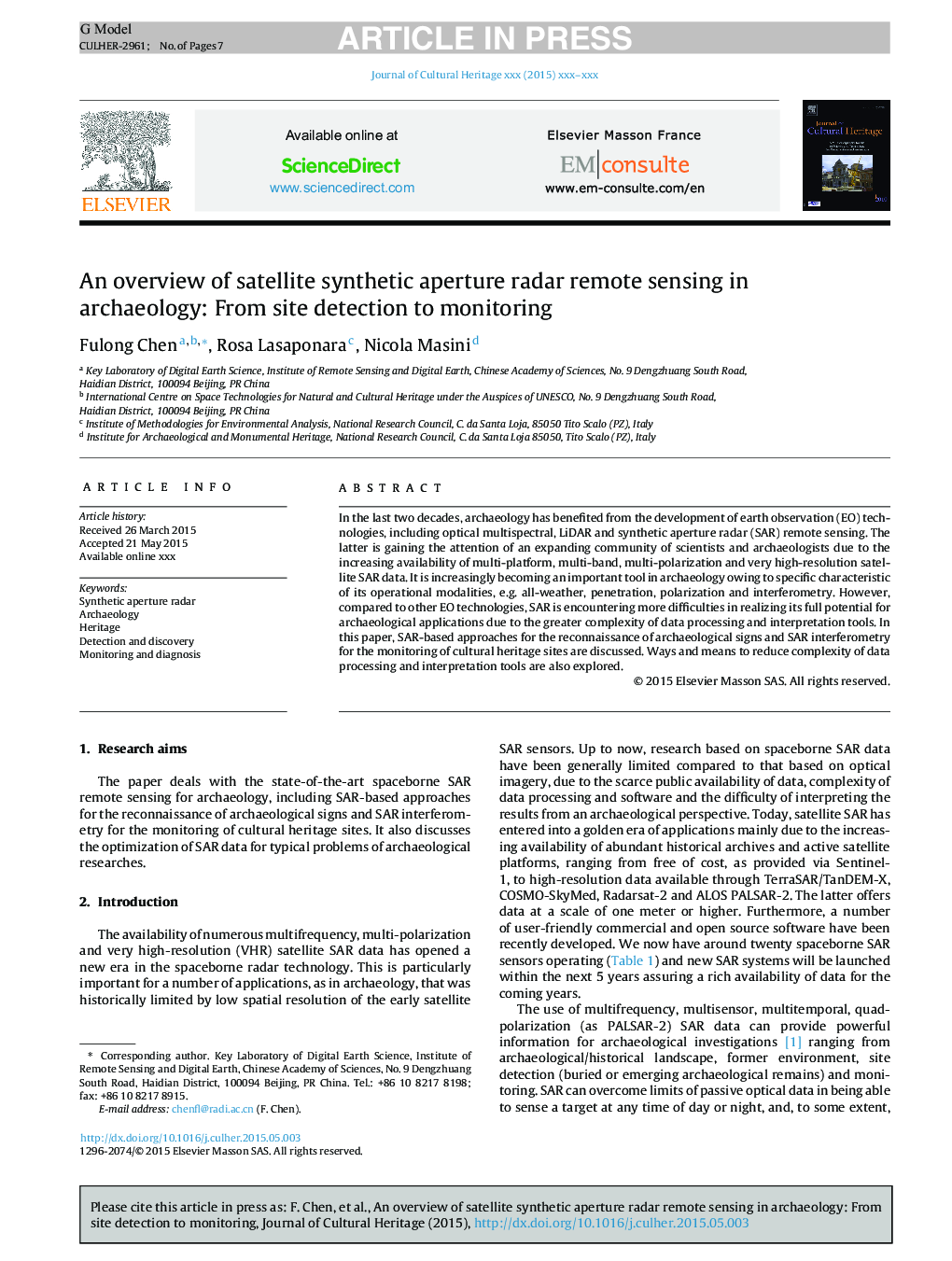| Article ID | Journal | Published Year | Pages | File Type |
|---|---|---|---|---|
| 5112784 | Journal of Cultural Heritage | 2017 | 7 Pages |
Abstract
In the last two decades, archaeology has benefited from the development of earth observation (EO) technologies, including optical multispectral, LiDAR and synthetic aperture radar (SAR) remote sensing. The latter is gaining the attention of an expanding community of scientists and archaeologists due to the increasing availability of multi-platform, multi-band, multi-polarization and very high-resolution satellite SAR data. It is increasingly becoming an important tool in archaeology owing to specific characteristic of its operational modalities, e.g. all-weather, penetration, polarization and interferometry. However, compared to other EO technologies, SAR is encountering more difficulties in realizing its full potential for archaeological applications due to the greater complexity of data processing and interpretation tools. In this paper, SAR-based approaches for the reconnaissance of archaeological signs and SAR interferometry for the monitoring of cultural heritage sites are discussed. Ways and means to reduce complexity of data processing and interpretation tools are also explored.
Related Topics
Physical Sciences and Engineering
Chemistry
Physical and Theoretical Chemistry
Authors
Fulong Chen, Rosa Lasaponara, Nicola Masini,
